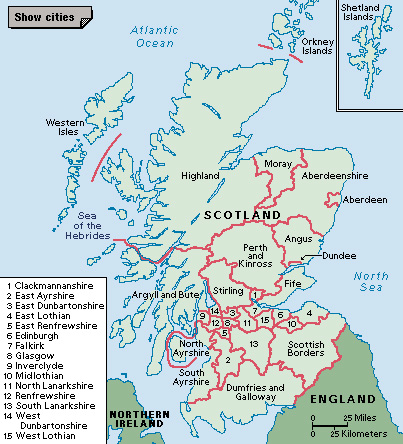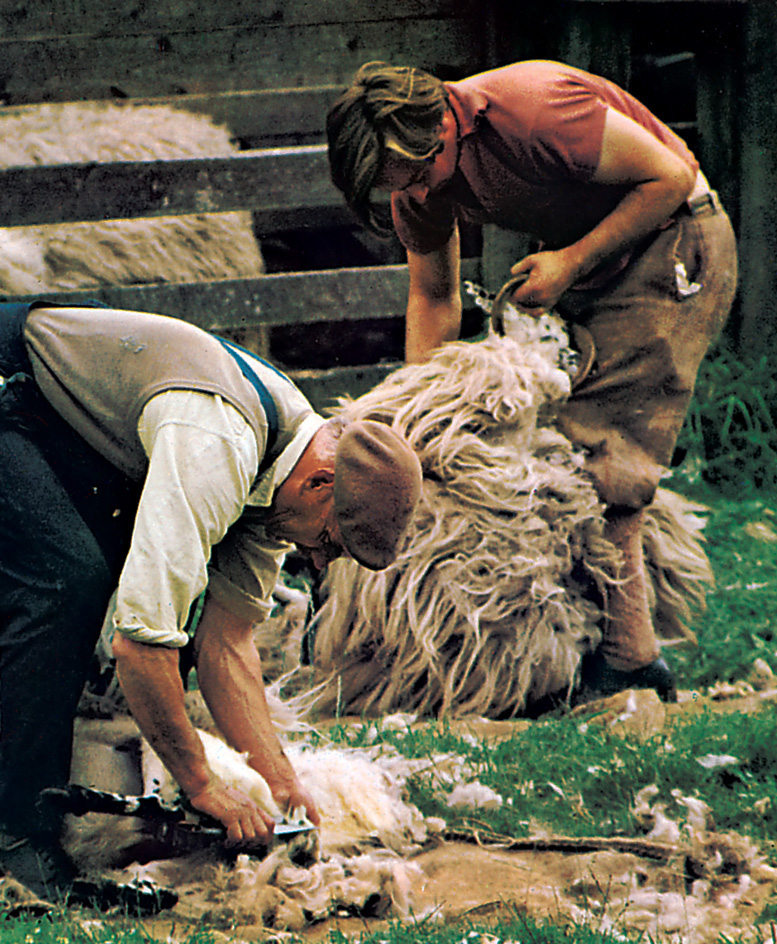Scottish Highlands are a rugged, barren land region that covers the northern two-thirds of Scotland. The Highlands are one of three land regions in Scotland. The other two are the Central Lowlands and the Southern Uplands. The Scottish Highlands are one of the least densely populated areas of Europe. Many people of the Highlands speak Gaelic, the ancient language of Scotland and Ireland, though use of the language is declining.

The land.
Mountains are the most notable feature of the Scottish Highlands. Two main mountain ranges—the Northwest Highlands and the Grampian Mountains—run through the Highlands from northeast to southwest. A deep valley called Glen More, or the Great Glen, separates the two ranges. The Highlands have two kinds of valleys—steep, narrow glens and broad, rolling straths. The region’s highest mountain is Ben Nevis, in the western part of the Grampian range. At 4,413 feet (1,345 meters) above sea level, it is the United Kingdom’s highest peak.
Most of Scotland’s lakes, called lochs, lie in deep Highland valleys. The area boasts Scotland’s largest lake, Loch Lomond, as well as its deepest lake, Loch Morar. Loch Ness is famous for the legendary “monster” that some people claim to have seen there. Other features of the Highlands include the Spey, a well-known salmon river, and the Caledonian Canal, which cuts across Scotland.
Much of the land in the Highlands is a treeless area called a moor or heath. The most rugged land of the region is along the west coast. Most Highlanders live on narrow coastal plains. The city of Inverness is the largest urban settlement in the region. Other notable towns include Fort William, Oban, and Thurso.
Many hills in the Highlands are covered in heather, a type of low evergreen shrub. Other plants found in the area include orchids and saxifrages. A variety of birds live in the Highlands, including capercaillies, ptarmigans, Scottish crossbills, and sea eagles. The region’s mammals include pine martens, which resemble weasels, and red deer, as well as dolphins and whales off the coast.
People and economy.
In some sections of the western Highlands, about half of the people speak at least some Gaelic as well as English. Most other Highlanders speak English. Many people in the region take part in the ancient Gaelic tradition of the ceilidh << KAY lee >>. Traditionally, the ceilidh has been an informal social gathering for singing, storytelling, and discussion. Today, a ceilidh also may be a local concert. The mod is an arts festival that includes competitions in Gaelic music, poetry, and prose. Some men of the Highlands wear traditional skirtlike garments called kilts. Most Scottish kilts are made of tartan, a checked cloth, the design of which is often associated with a particular Scottish clan (group of people with common ancestors).
Chief industries in the Highlands include hydroelectric power generation, knitwear and textile production, and whisky distillation. Service industries—including education, health services, public administration, retail trade, and tourism—employ about three-quarters of the workers in the region. Sheep are raised as a source of income for many people. Some residents make money by crofting (farming a small area of land).

History.
Before the 1300’s, the main loyalty of most of Scotland’s inhabitants was to family and to the smaller, local area in which they lived. During the late 1200’s and the 1300’s, the Scots fought off attempts by English kings to gain control over Scotland. These struggles began to strengthen the sense of common identity among people living in the Scottish regions. But the Highlanders’ isolation from the seat of government, the use of the Gaelic language, and the strength of the Highland clans produced a sense of cultural separation between the Highlands and other regions. The differences continued after England and Scotland came under the rule of the same monarch in 1603. They were united by the Act of Union of 1707.
Numerous clashes involving Highlanders and other groups occurred. They included the Massacre of Glencoe in 1692; the Jacobite risings of 1715 and 1745, which ended with the Battle of Culloden in 1746; the Highland Clearances from the late 1700’s to the mid-1800’s; and the agrarian unrest known as the Crofters’ War of the 1880’s.
The cultural isolation of the Scottish Highlands lessened during the 1900’s. In the late 1900’s, Scotland and other divisions of the United Kingdom gained increased political powers through a process called devolution. Since 1996, the unitary authority of Highland—which covers most, but not all, of the Highlands region—has been responsible for a number of local government services. See Highland.
